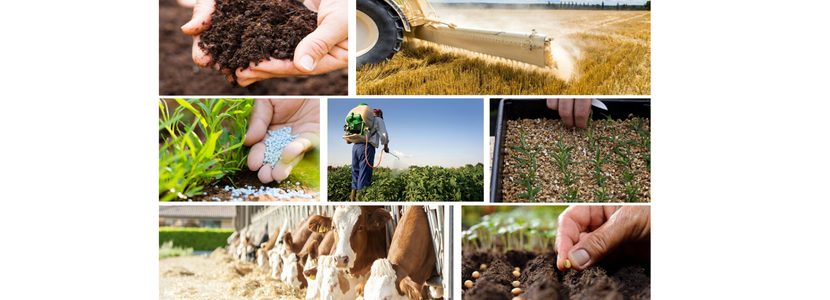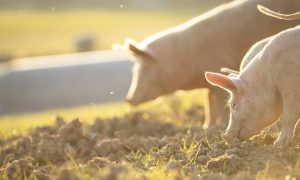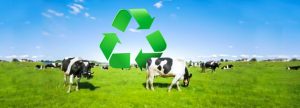 17 Oct 2022
17 Oct 2022
Agriculture plays an essential role in the production of renewable resources that meet the demands of a growing human population. Farm inputs represent a significant factor within this process.
These demands upon agricultural outputs represent a significant challenge when it comes to finding an equilibrium with finite agro production inputs like: water, soil and nutrients. Underlining the core concept of sustainability, and establishing an ethical dilemma regarding agricultural biomass production.

Changes in consumption patterns and what does this imply
Consumption patterns have shifted towards a greater proportion of animal derived products despite the worlds rising population. This can be partially explained by increased incomes per capita which result in higher consumption levels of animal products. Bringing along higher expectations and social demands upon agriculture. Besides focusing on the production of high-quality food, consumer demands also encompass the productive conditions under which such food is being produced. Aspects like: sustainable production, environmental protection, animal health and animal welfare are key points within this discussion. Driving innovation and research towards this direction.

Under such scenario, farm inputs of various kinds are of great importance for the success of every agricultural business. Therefore, it is not surprising that interesting developments and innovations within this area will be presented at EuroTier 2022.

Minimizing environmental impacts through feed (reduction strategies)
Feed and feeding are particularly important amongst farm inputs. “Good” animal nutrition depends on good ration planning and consequently on suitable feeding systems. One goal that has traditionally been pursued in relation to feeding is to minimize the use and emission of environmentally relevant substances such a sN (nitrogen) and P (phosphorus). Existing knowledge on sustainability and management practices that include minimization strategies are key for future farming. Classic approaches like: the optimization of dietary amino acid profiles, the inclusion of enzyme supplements like phytases, to improve nutrient availability and digestibility, are examples of strategies that can make significant contributions. However, it is quite as important to stay open to new approaches and innovations.

Agriculture, like other productive sectors, is called upon to develop and implement realistic reduction strategies regarding N and P emissions, methane amongst other productive residues. The sector must address “climate-friendly farm inputs” from different angles in the coming years. This year’s EUROTIER provides an excellent platform to showcase innovative optimisation approaches covering different areas. Ranging from methane-reduced feeding to climate gas-reduced manure storage. The field of methane-lowering additives, already seems to be an almost palpable reality.
Although a complete reduction cannot be expected through greenhouse gas reducing strategies, this path still holds promising prospects that deserve further exploration. Evaluating reduction potentials and combining strategies to achieve the greatest possible effects within farms.

Animal health and animal welfare have always held importance within livestock farming. Whether it is through the implementation of general hygiene measures on the farm or through animal feeding practices. Despite being an area of interest, the industry’s efforts in regards to enhancing animal feed in particular, have increased noticeably and will probably continue to do so. Therefore, many innovations and new developments related to to this field can be expected at EUROTIER. Ranging from optimised supply of health-relevant nutrients such as vitamins, to the synergistic combination of different nutrients and optimised stable hygiene.
Benefits derived from microbiome modulation
Numerous developments are also directed towards microbiome modulation. Exploring different tools and strategies to influence microbial populations within animal intestines, with the aim of increasing their overall resilience. Other approaches encompass feeding strategies that are adapted to special metabolic conditions in animals.

The use of farm inputs is always subject to change. In a scenario with a general shortage of land resources, the avoidance of food competition with humans will become an important driving force for innovation. This means, that farm-produced basic fodder will continue to hold its importance and it will most likely increase.
Resources’ and energetic optimization
The use of by-products will also continue to increase, although it is worth noting that resources, especially in food and bioenergy production, are already sensibly used to preserve efficiency within the nutrient cycle. Feed additives that facilitate the use of these feed ingredients, making them more efficient are particularly significant.
Recent developments in the energy and agricultural commodity markets generated by the Ukraine war will be reflected in the farm input market for some time. The scarcity and price of fossil energy will influence decisions regarding feed treatment, reducing certain production processes (e.g. drying with fossil energy sources) while promoting others and driving innovation towards energy saving and cost effective practices.
Concluding Remarks
Demands on farming activity are likely to increase significantly in the coming years. Hence, a thorough discussion regarding animal production efficiency and evaluating its sustainability is very necessary. Suitable solutions for individual farms will continue to be important and in all areas of farm input use, innovations will be very welcome. EuroTier 2022 represents a suitable platform to allow a comprehensive overview of this current scenario. Providing a space for discussion and information exchange.

Subscribe now to the technical magazine of animal nutrition
AUTHORS

Nutritional Interventions to Improve Fertility in Male Broiler Breeders
Edgar Oviedo
The Use of Organic Acids in Poultry: A Natural Path to Health and Productivity
M. Naeem
Synergistic Benefits of Prebiotics and Probiotics in Poultry, Swine, and Cattle
Gustavo Adolfo Quintana-Ospina
Hybrid Rye Potential in Laying Hen Feed Rations
Gwendolyn Jones
A day in the life of phosphorus in pigs: Part I
Rafael Duran Giménez-Rico
Use of enzymes in diets for ruminants
Braulio de la Calle Campos
Minerals and Hoof Health in the Pregnant Sow
Juan Gabriel Espino
Impact of Oxidized Fats on Swine Reproduction and Offspring
Maria Alejandra Perez Alvarado